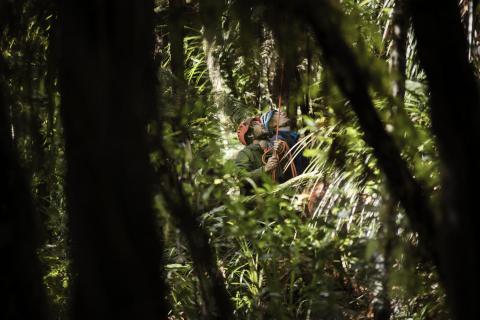
WAIPOUA FOREST, New Zealand — Two arborists, chest-deep in underbrush, secured a rope slung over a branch in the Waipoua Forest, close to the northern tip of New Zealand.
Scott Forrest pumped his fist. “Yeah, great stuff,” he said. He recently won the world championship for tree climbing.
But the job this day was a special privilege.
He was about to ascend a 148-foot-tall, 2,000-year-old kauri tree known as Tane Mahuta, a tree so sacred to the indigenous Maori people that even touching it is taboo.
The climb, carried out in late August, was a matter of urgency — and part of a growing collaboration among the local Maori tribe Te Roroa, arborists and researchers.
The goal is to prevent Tane Mahuta and other New Zealand kauri trees from succumbing to a deadly, fast-spreading rot called kauri dieback.

